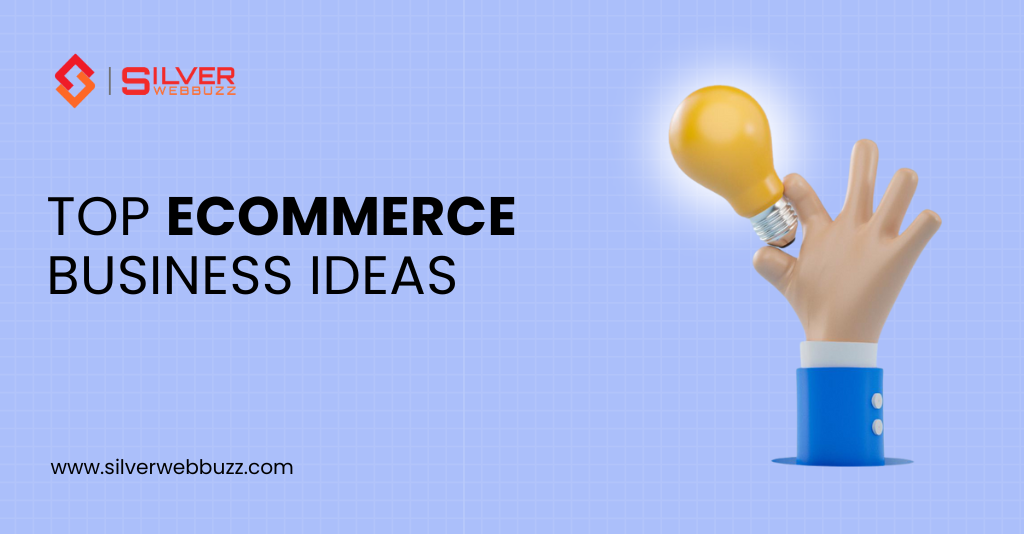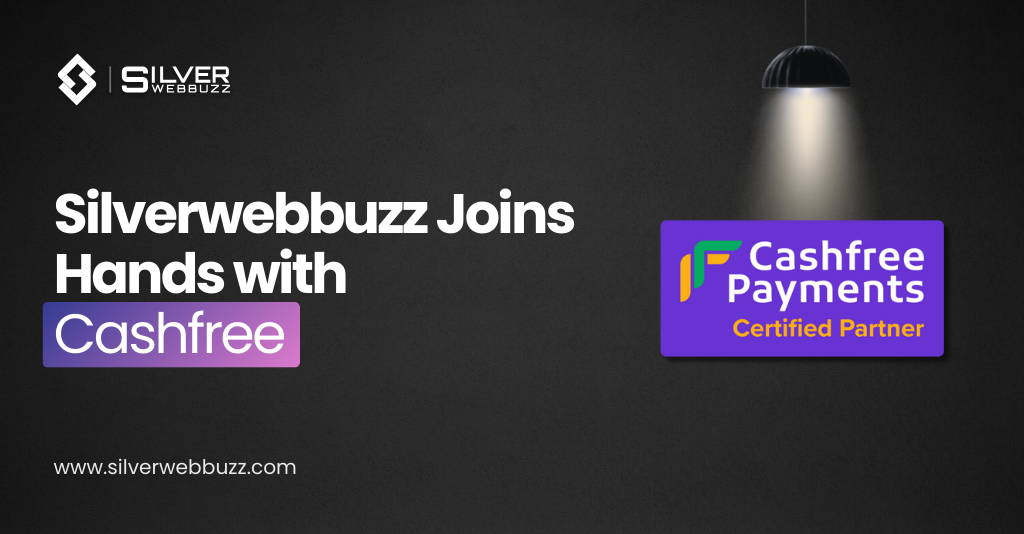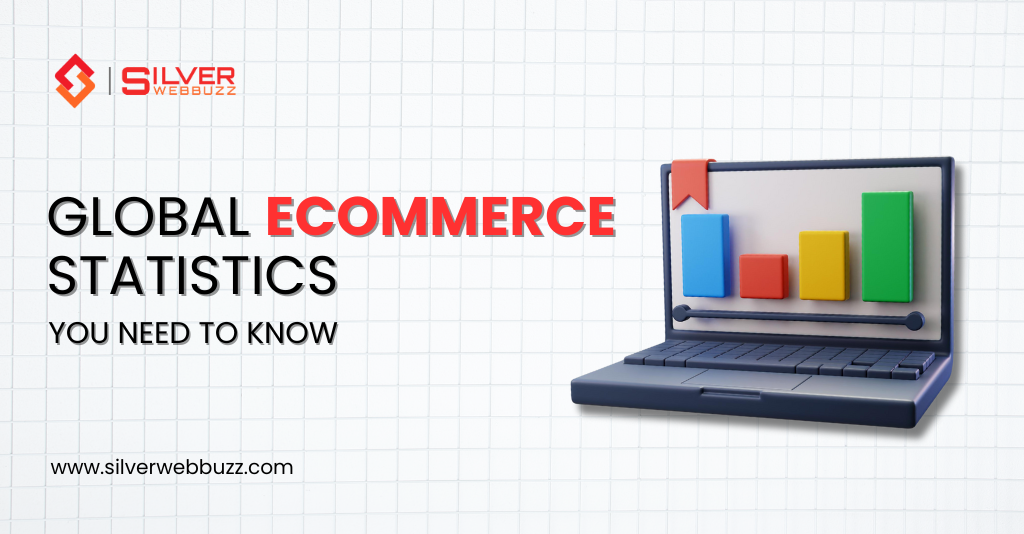The allure of entrepreneurship has never been stronger, and as we step into 2025, the digital marketplace stands out as a realm of boundless opportunity. Forget the traditional barriers of high overheads and brick-and-mortar limitations; the ecommerce revolution has leveled the playing field. Why is 2025 the golden year for starting your ecommerce business? Because the convergence of technology, consumer behavior, and accessible platforms has created a perfect storm for innovation and profit. The U.S. ecommerce market alone is projected to grow by 8.6% in 2025, with online sales soaring to an estimated $1.3 trillion.
This definitive guide is engineered to be your launchpad. You’ll discover the most practical, profitable, and trending ecommerce business ideas that require minimal initial investment. More than just a list, this is a strategic blueprint packed with actionable steps, tool recommendations, and expert insights to help you not just start, but succeed and scale in the bustling American market.
Key Takeaways
- Niche Down for Success: The most successful ecommerce business ideas don’t try to be everything to everyone. Focusing on a specific niche (e.g., sustainable pet products, vintage-inspired digital art) allows you to build a loyal community and command higher authority.
- Embrace Low-Investment Models: You don’t need a warehouse full of products to start. Business models like dropshipping, print-on-demand, and selling digital goods eliminate the financial risk of unsold inventory, making it possible to launch a business with just a few hundred dollars.
- Leverage Technology and AI: 2025 is the year of the AI co-pilot. Use artificial intelligence for everything from generating product designs and writing marketing copy to automating customer service. Platforms like Shopify and BigCommerce integrate these tools seamlessly.
- Build a Brand, Not Just a Store: Products can be replicated, but a strong brand story and an authentic connection with your audience are unique to you. Focus on creating a memorable customer experience to foster loyalty and stand out from the competition.
Why Start an eCommerce Business in 2025?
The momentum of online commerce is not just continuing; it’s accelerating and evolving. The digital shift that gained massive traction post-2020 has permanently altered consumer habits, creating a landscape ripe for new entrants.
The Unstoppable Digital Shift: The growth of ecommerce is consistently outpacing in-store retail by a significant margin. Projections show that by 2028, one out of every five dollars spent on retail in the U.S. will be online. This isn’t a fleeting trend; it’s a fundamental restructuring of how consumers discover, evaluate, and purchase goods and services.
Consumer Trends Fueling Online Growth: Modern shoppers are driven by more than just price. Key trends for 2025 include:
Hyper-Personalization: AI is enabling brands to offer incredibly personalized shopping experiences, from product recommendations to tailored marketing messages.
- Social Commerce: A significant portion of online sales now originates from social media platforms. The seamless integration of shopping features on apps like Instagram, TikTok, and Facebook makes it easier than ever to convert followers into customers.
- Sustainability and Ethics: A growing segment of consumers actively seeks out brands that align with their values. Businesses built on eco-friendly products, transparent sourcing, and ethical practices have a powerful competitive advantage.
- Convenience is King: Shoppers expect streamlined payment options, fast shipping, and easy returns. The rise of “click-and-collect” and mobile checkouts, which could account for nearly 60% of total ecommerce sales in 2025, underscores this demand for efficiency.
Historically Low Barrier to Entry: Gone are the days when starting a business required a hefty bank loan and a physical location. Platforms like Shopify, Wix, and BigCommerce offer all-in-one solutions that handle everything from website building to payment processing for a low monthly fee. Business models like dropshipping and print-on-demand remove the need to invest in or store inventory, making it possible to launch with minimal financial risk.
The Future-Proof Nature of Online Business: An online business offers unparalleled flexibility and scalability. You can manage your store from anywhere, reach a global audience, and adapt quickly to changing market trends. This agility makes an ecommerce venture a resilient and future-proof career path in an increasingly digital world.
What Makes a Great eCommerce Business Idea?
A profitable idea is a blend of passion, market demand, and strategic thinking. Before you dive in, ensure your concept is built on a solid foundation. The best ecommerce business ideas share these core characteristics:
Low Startup Costs: A great idea doesn’t require you to bet your life savings. By leveraging models that avoid upfront inventory purchases, you can test your concept in the real market without facing significant financial risk. Your primary initial investments will be in your ecommerce platform subscription, a domain name, and minimal marketing efforts.
High Potential for Scalability: Think about the future from day one. Can your business grow without a proportional increase in complexity and cost? A scalable business might involve expanding your product line, targeting new customer demographics, or automating fulfillment processes. A service-based business can scale by hiring other freelancers or creating courses, while a product business can scale by adding new items or exploring new marketplaces.
Strong Demand + Niche Opportunities: The sweet spot for ecommerce is where broad market demand intersects with a specific, underserved niche. Instead of selling “dog toys,” consider “durable chew toys for large-breed dogs made from recycled materials.” This specificity makes you a big fish in a small pond. Use tools like Google Trends to analyze search interest, browse Reddit communities to understand pain points, and explore ProductHunt for emerging tech trends to validate your niche.
Minimal Inventory Model: Inventory is cash that isn’t in your bank account. The most beginner-friendly ecommerce ideas utilize models that minimize or eliminate the need to hold stock.
- Dropshipping: You list products in your store, a customer buys them, and a third-party supplier ships the product directly to the customer. You never touch the inventory.
- Print-on-Demand (POD): You create designs for products like t-shirts, mugs, or posters. When a customer orders, a POD service prints your design on the product and ships it for you.
- Digital Products: Ebooks, courses, templates, and software have zero cost of replication. You create them once and can sell them infinitely.
Automation-Friendly: Your business should work for you, not the other way around. Choose an idea that allows you to automate key operations. This includes using AI for customer service chatbots, email marketing automation to nurture leads, and dropshipping or fulfillment centers to handle packing and shipping. This frees you up to focus on the creative and strategic aspects of growing your brand.
Best eCommerce Business Ideas to Start in 2025
Here are 27 of the most profitable ecommerce business ideas, categorized to help you find the perfect fit for your skills and passions.
A. Product-Based eCommerce Business Ideas
These ideas revolve around selling physical goods, but with modern, low-investment twists.
1. Start Your Own Clothing Line

- The Idea: Move beyond generic t-shirts. Use Print-on-Demand (POD) to launch a fashion brand centered on a specific niche like retro gaming, minimalist typography, or designs celebrating science.
- Why it’s Profitable: POD eliminates inventory risk. You can offer dozens of designs and products without paying a cent until you make a sale.
Action Plan:
- Find Your Niche: Who are you designing for? Skaters? Book lovers? Nurses?
- Create Designs: Use Canva for simple text-based designs or hire a designer on Fiverr. For truly unique visuals, use AI art generators like Midjourney to create stunning, one-of-a-kind graphics for your apparel.
- Choose a POD Partner: Integrate a service like Printful or Printify with your Shopify store. They handle printing and shipping automatically.
Expert Insight: Order samples first! The quality of the garment and the print directly reflects on your brand. A cheap-feeling shirt will kill repeat business, no matter how great the design.
2. Launch a Dropshipping Business
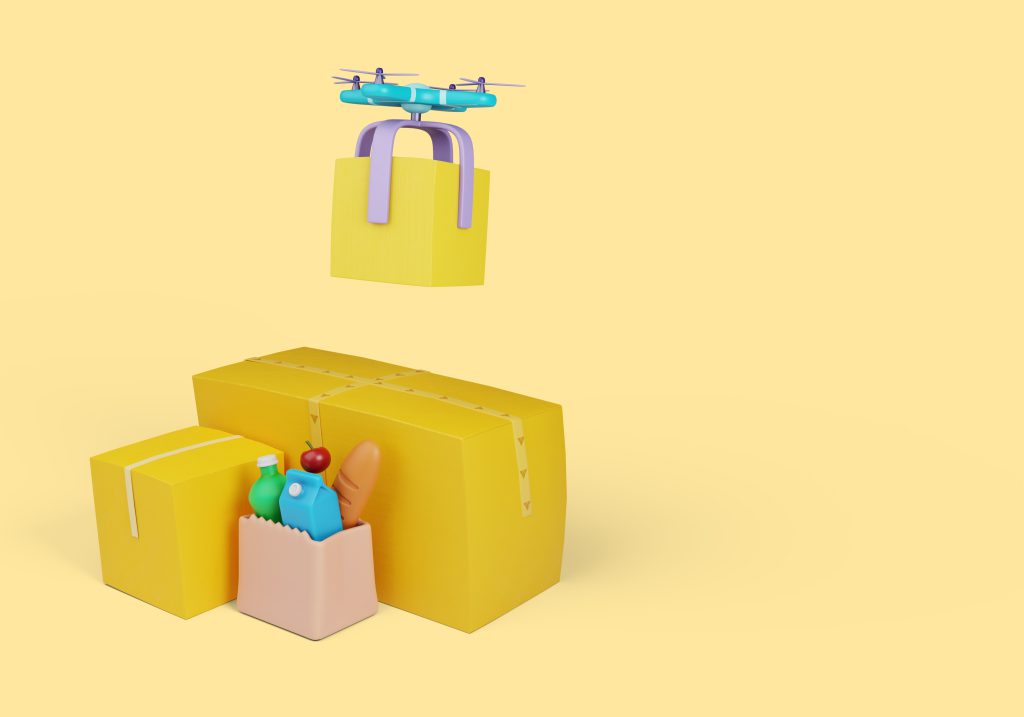
- The Idea: Become the curator of a niche store. Instead of selling random trending gadgets, open a store dedicated to “smart home devices for apartments,” “eco-friendly kitchen supplies,” or “accessories for pet influencers.”
- Why it’s Profitable: You act as a middleman, so there’s no need to buy products upfront. This is one of the most popular ecommerce store ideas for beginners due to its low financial barrier.
Action Plan:
- Select a Niche: Passion is a plus, but profitability is key. Research niches with high demand and low competition.
- Find Suppliers: Use platforms like Spocket or DSers to find vetted suppliers with products available in the USA for faster shipping.
- Build Your Store: Curate your products with compelling descriptions and high-quality images.
Expert Insight: Don’t compete on price; compete on brand. Write detailed product guides, create video reviews, and offer exceptional customer service to justify your prices and build trust.
3. Curate Subscription Boxes
- The Idea: Deliver a recurring experience to your customers’ doorsteps. Focus on a passionate community, such as a “monthly artisanal coffee box,” a “quarterly self-care box for new moms,” or a “discovery box for jerky lovers.”
- Why it’s Profitable: This model generates predictable, recurring revenue, which is the holy grail of business. The subscription economy is expected to grow to $1.5 trillion in 2025.
Action Plan:
- Define Your Box: What’s the theme? Who is the audience? What’s the price point?
- Source Products: Partner with small businesses and artisans to get wholesale pricing. Your first box might even be products you buy at retail to test the concept.
- Manage Logistics: Use Shopify apps like Subbly or Recharge to manage recurring billing. Start by packing boxes yourself before outsourcing to a fulfillment center.
Expert Insight: The “unboxing experience” is everything. Invest in branded packaging, include a personalized note, and make the entire experience feel like a gift. This is what gets shared on social media.
4. Sell Handmade Goods
- The Idea: Turn your craft into a career. Whether you make custom pottery, hand-poured candles, personalized jewelry, or bespoke leather goods, there’s a market for high-quality, artisanal products.
- Why it’s Profitable: You have a 100% unique product that can’t be found on Amazon. This allows you to command premium prices and build a strong, personal brand.
Action Plan:
- Choose Your Platform: Start on Etsy to tap into a built-in audience of buyers seeking handmade items. As you grow, launch your own Shopify store to have more control over your brand and customer relationships.
- Master Product Photography: Your photos are your storefront. Invest time in learning how to take bright, clear, and appealing pictures of your products.
Price for Profit: Don’t just charge for materials. Factor in your time, skill, platform fees, and shipping.
Expert Insight: Tell the story behind your craft. Create content showing your process, the materials you use, and the passion that goes into each piece. People are buying a piece of your artistry, not just an object.
5. Develop a Niche Product
- The Idea: Solve a very specific problem. This is the path for inventors. Think “a better travel pillow for side sleepers” or “a spill-proof coffee mug for boaters.”
- Why it’s Profitable: Creating a unique solution to a painful problem allows you to dominate a category and face very little direct competition.
Action Plan:
- Identify a Problem: Pay attention to your own frustrations or the complaints you see in online communities (Reddit, Facebook Groups).
- Validate the Idea: Before you spend a dime on development, survey your target audience. Would they actually buy this? How much would they pay? Use a platform like SurveyMonkey to gather data.
- Create a Prototype: Work with a designer or engineer on a platform like Upwork to create a 3D model or physical prototype.
Expert Insight: Launch with a Minimum Viable Product (MVP). Your first version doesn’t need to be perfect. Get it into the hands of real customers and use their feedback to iterate and improve.
6. Flip Thrift Store Finds Online
- The Idea: Become a digital treasure hunter. Source undervalued vintage clothing, rare books, retro electronics, or unique home decor from local thrift stores, flea markets, and estate sales, then resell them online for a profit.
- Why it’s Profitable: Your inventory cost is extremely low, leading to very high profit margins. You’re tapping into the massive consumer trends of sustainability and nostalgia.
Action Plan:
- Specialize: Become an expert in one area (e.g., 90s band t-shirts, mid-century glassware). This helps you spot valuable items quickly.
- Source Strategically: Visit thrift stores on weekday mornings after they’ve restocked. Learn how to negotiate respectfully at estate sales.
- List on Multiple Platforms: Use eBay for auctions and collectibles, Poshmark or Depop for fashion, and Facebook Marketplace for local sales of larger items.
Expert Insight: Condition is everything. Learn basic restoration and cleaning techniques. A small repair or a good cleaning can dramatically increase an item’s value. Always be transparent about any flaws in your listings.
7. Sell Merchandise on Marketplaces
- The Idea: Leverage the massive, built-in audiences of established online marketplaces. Instead of driving all your own traffic, sell your products where millions of people are already shopping.
- Why it’s Profitable: You gain immediate access to a huge customer base. This is a great way to test product ideas and generate cash flow quickly.
Action Plan:
1. Choose Your Arena:
- Amazon FBA: You send your products to Amazon’s warehouses, and they handle storage, packing, shipping, and customer service. Ideal for high-volume, standardized products.
- Etsy: The go-to for handmade, vintage, and craft supplies.
- eBay: Best for used goods, collectibles, and auction-style sales.
- Walmart Marketplace: A growing platform for established brands looking to diversify
2. Optimize Your Listings: Each platform has its own algorithm. Use high-quality keywords, clear photos, and competitive pricing to rank higher in search results.
Expert Insight: Don’t just be a seller; build a brand within the marketplace. Use branded packaging (if fulfilling yourself), create a compelling “About Us” page, and encourage reviews to build trust and stand out in a crowded space.
B. Service-Based eCommerce Business Ideas
Monetize your skills. Here, your product is your expertise, sold and delivered online.
1. Become a Virtual Assistant (VA)

- The Idea: Offer remote administrative, creative, or technical support. Niche down to become an eCommerce Virtual Assistant, helping store owners with product uploads, customer service emails, or managing their Shopify backend.
- Why it’s Profitable: Startup costs are near zero if you already have a computer and internet. There is a massive demand from small business owners who need help but can’t afford a full-time employee.
Action Plan:
- Define Your Services: What are you great at? Writing? Social media? Bookkeeping?
- Create Your Packages: Offer your services at an hourly rate or in monthly retainer packages (e.g., 10 hours per month for $X).
- Find Clients: Create a profile on platforms like Upwork or Fiverr. Also, network in Facebook groups for online entrepreneurs.
Expert Insight: Create a simple portfolio website showcasing your skills and testimonials. This positions you as a professional business owner, not just a gig worker, allowing you to charge higher rates.
2. Start an Online Coaching Business

- The Idea: Guide others to achieve a result you’ve mastered. This could be in business, fitness, marketing, life skills, or any area where you have proven expertise.
- Why it’s Profitable: This is a high-margin business with immense scalability. Your knowledge is the product.
Action Plan:
- Certify Your Niche: What specific problem do you solve for what specific person? (e.g., “I help first-time managers develop leadership skills.”)
- Structure Your Offer: Will you offer one-on-one sessions, group coaching programs, or a high-ticket mastermind?
- Set Up Your Tech Stack: Use Calendly for booking, Zoom for sessions, and a simple payment gateway like Stripe or PayPal.
Expert Insight: Offer a free 15-30 minute “discovery call” to potential clients. This is a no-pressure way to see if you’re a good fit and to demonstrate your value before asking for a sale.
3. Become an Online Fitness Trainer
- The Idea: Bring the gym to the living room. Offer personalized training sessions, live-streamed group classes, or sell pre-recorded workout programs.
- Why it’s Profitable: The demand for at-home fitness solutions remains high. You can build a global client base without the overhead of a physical studio.
Action Plan:
- Specialize: Focus on a style (e.g., HIIT, yoga, post-natal fitness) or a target client (e.g., busy professionals, seniors).
- Build an Audience: Use Instagram or YouTube to share free workout tips and build a community.
- Monetize: Offer one-on-one virtual training. The ecommerce angle comes from selling your own branded resistance bands, workout guides (PDFs), or personalized meal plans.
Expert Insight: Liability insurance is non-negotiable. Protect yourself and your business by getting proper coverage before you train your first client.
4. Start an Accounting or Bookkeeping Firm
- The Idea: Cater specifically to the booming creator and freelancer economy. Many ecommerce sellers are creative experts, not financial gurus, and desperately need help with their books.
- Why it’s Profitable: It’s a specialized, high-demand service with the potential for long-term, recurring revenue from monthly clients.
Action Plan:
- Get Certified: If you aren’t already, get certified in platforms like QuickBooks or Xero.
- Target Your Client: Market your services in ecommerce forums and social media groups. Understand the specific challenges of online sellers, like tracking platform fees and sales tax.
- Use Modern Tools: Utilize cloud-based software like Wave or QuickBooks Online to work with clients from anywhere.
Expert Insight: Offer a “cleanup” service for new clients whose books are a mess. This is often a high-value, one-time project that can easily lead to an ongoing monthly retainer contract.
5. Do Voiceover Work or Offer Audio Services
- The Idea: Your voice is your product. Offer voiceover services for YouTube videos, podcast intros, product demonstration videos, and social media ads.
- Why it’s Profitable: With a modest investment in a quality microphone and some basic soundproofing, you can run a professional business from a closet in your home.
Action Plan:
- Find Your Voice: Are you warm and conversational, or authoritative and professional?
- Create a Demo Reel: Record short snippets showcasing your vocal range and styles. This is your audio portfolio.
- Get Gigs: Start on platforms like Voices.com or Fiverr to build experience and a client list.
Expert Insight: Invest in a decent USB microphone (like a Blue Yeti or Rode NT-USB) and learn basic audio editing in a free program like Audacity. Clean, professional-sounding audio is the biggest differentiator between amateurs and pros.
C. Creator-Based eCommerce Ideas
If you love building an audience and creating content, these models are for you. Your community is your customer base.
1. Become an Influencer in Your Niche
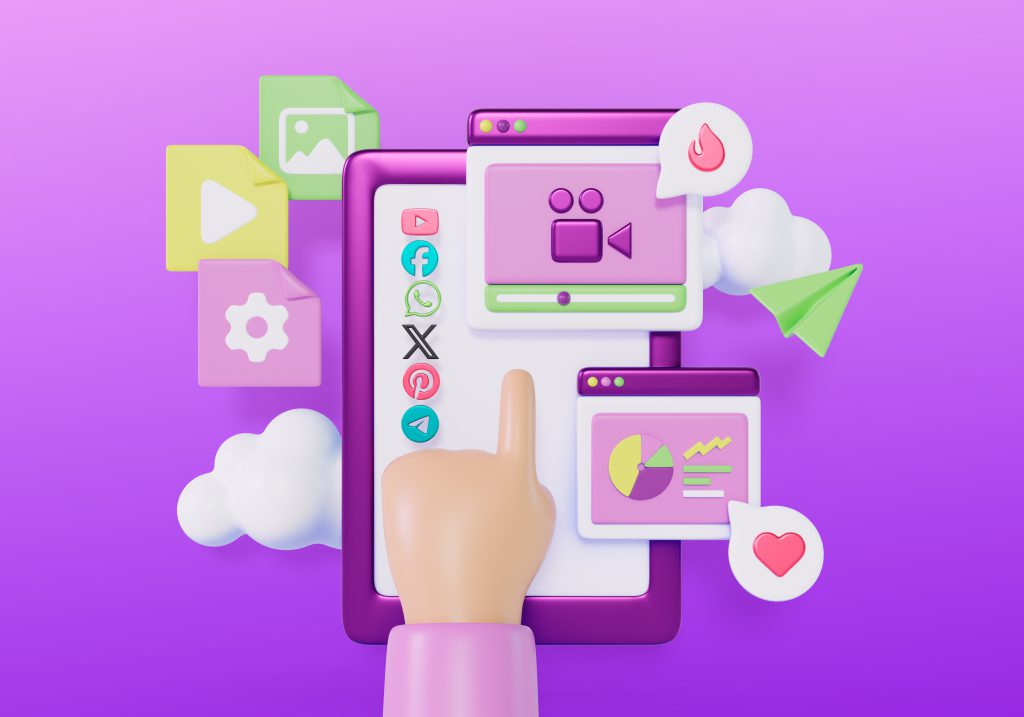
- The Idea: Build a dedicated following around a topic you love, whether it’s sustainable fashion, budget travel, tech gadgets, or parenting hacks. Your influence becomes your business.
- Why it’s Profitable: You build multiple streams of income. It’s not just one thing; it’s a combination of brand deals, affiliate marketing, and selling your own products.
Action Plan:
- Choose a Platform and Niche: Where does your target audience hang out? Instagram for visuals, TikTok for short-form video, a blog for in-depth reviews.
- Create Value-Driven Content: Consistently post helpful, entertaining, or inspiring content to build trust and attract followers.
- Monetize: Start with affiliate links (recommending products you use and love). As you grow, brands will start reaching out for sponsored posts and collaborations.
Expert Insight: Your primary ecommerce play is to eventually launch your own product. A fashion influencer can launch a clothing line; a tech reviewer can create a digital guide. Your audience is already primed to buy from you.
2. Start a YouTube Channel or Podcast
- The Idea: Become a trusted voice or face in a specific field. Create educational, entertaining, or interview-style content.
- Why it’s Profitable: Like influencing, this model creates diverse revenue streams: ad revenue from the platform, direct sponsorships, affiliate marketing in your descriptions, and selling your own merchandise or digital products.
Action Plan:
- Define Your Show’s Concept: What is your unique angle or format?
- Invest in Good Audio/Video: You don’t need a Hollywood studio, but clear audio and decent lighting make a huge difference in perceived quality.
- Be Consistent: Stick to a regular publishing schedule to keep your audience engaged and coming back for more.
Expert Insight: The ecommerce angle is crucial. From day one, think about what you can sell. A simple “Buy my merch” link in the description using a print-on-demand service is an easy way to start generating revenue before you even qualify for ad monetization.
3. Start a Blog or Newsletter
- The Idea: In the age of fleeting social media, owning your platform is more powerful than ever. Create a go-to resource for a specific topic, building a direct relationship with your audience through their inbox.
- Why it’s Profitable: You build a highly engaged email list, which is one of the most valuable assets in digital marketing. Monetize through affiliate links, selling digital products, sponsored deep-dives, or premium paid subscriptions.
Action Plan:
- Choose Your Niche and Platform: Use WordPress for a traditional blog or a platform like Substack or Ghost for a newsletter-focused approach.
- Focus on SEO: For a blog, understanding Search Engine Optimization is critical for attracting readers from Google.
- Create a Lead Magnet: Offer a free checklist, e-book, or template in exchange for an email address to build your list.
Expert Insight: Treat your newsletter like a personal conversation. Share unique insights and behind-the-scenes content not available on your public blog. This builds a strong bond and makes subscribers feel like insiders.
4. Sell Your Art Online
- The Idea: Go beyond the local gallery. Sell physical paintings, digital prints, or merchandise featuring your artwork to a global audience.
- Why it’s Profitable: The internet allows you to connect directly with collectors and fans, bypassing traditional gallery fees and gatekeepers.
Action Plan:
- Digitize Your Work: Get high-resolution scans or photos of your physical art.
- Sell Originals and Prints: Use your own Shopify store to sell original pieces. Use a print-on-demand service to sell affordable prints, posters, and phone cases featuring your art, creating a passive income stream.
- Explore New Tech: Consider integrating Augmented Reality (AR) to allow customers to “preview” a painting on their own wall through their phone camera.
Expert Insight: Build a brand around your artistic identity. Use social media to share your creative process, your inspirations, and the stories behind your pieces. People connect with the artist as much as the art itself.
5. Sell Music or Beats
- The Idea: If you’re a musician or producer, your creations are digital products. License your beats to rappers and content creators, or sell your songs directly to fans.
- Why it’s Profitable: It’s a purely digital business with high-profit margins. Create a beat or a song once and sell it thousands of times.
Action Plan:
- Choose a Marketplace: Platforms like BeatStars and Airbit are industry standards for selling beats. Bandcamp is excellent for selling albums directly to fans.
- Understand Licensing: Offer different licenses (e.g., basic MP3 lease, premium WAV trackouts, exclusive rights) at different price points.
- Build Your Brand: Promote your work on YouTube, SoundCloud, and social media to attract artists and build a following.
Expert Insight: Offer a subscription model. For a monthly fee, give subscribers access to a certain number of beat downloads per month. This creates predictable, recurring revenue for your business.
6. Publish Your Own Book (eBook/Print)
- The Idea: Become a published author without needing a traditional publishing deal. Write a non-fiction book sharing your expertise, or a fiction novel in a popular genre.
- Why it’s Profitable: Amazon Kindle Direct Publishing (KDP) allows you to publish an ebook and a print-on-demand paperback with no upfront cost. You earn royalties of up to 70% on sales.
Action Plan:
- Write in a Marketable Genre: Research popular topics and genres. Business, self-help, productivity, and romance consistently sell well.
- Invest in Professionalism: Hire a professional editor and a cover designer. A great cover is the single most important marketing tool for a book.
- Launch and Market: Use Amazon KDP to publish. Promote your book to your email list and social media followers.
Expert Insight: Your book is a business card. Use your book to drive readers to your website, where you can sell them higher-ticket items like courses, coaching, or consulting services.
D. Digital Product & Tech-Based eCommerce Ideas
These ideas have infinite scalability. You build it once and can sell it forever.
1. Build and Sell Apps or SaaS Products
- The Idea: Don’t know how to code? No problem. The rise of low-code and no-code platforms like Bubble and Adalo means you can build and launch a functional web or mobile app by yourself. Target a niche need, especially for other ecommerce store owners (e.g., a simple inventory tracker, a social media content scheduler).
- Why it’s Profitable: Software as a Service (SaaS) provides recurring monthly revenue. It’s the ultimate scalable business model.
Action Plan:
- Identify a Simple Problem: Don’t try to build the next Facebook. Find a small, annoying problem and solve it well.
- Use a No-Code Tool: Learn a platform like Bubble. There are countless tutorials on YouTube.
- Launch and Get Feedback: Launch your MVP and focus on getting your first 10 paying customers. Their feedback is gold.
Expert Insight: Start by “pre-selling” your idea. Create a simple landing page explaining what your app will do and collect email addresses. If you can’t get anyone interested in the idea, you’ve saved yourself months of development time.
2. Create and Sell Online Courses

- The Idea: Package your knowledge into a comprehensive online course. If you can get someone a result—whether it’s learning guitar, mastering Excel, or starting a podcast—you can create a course.
- Why it’s Profitable: This is a high-margin digital product. You have a huge potential audience and can automate the entire sales and delivery process.
Action Plan:
- Validate Your Course Idea: Survey your audience. Is this something they are willing to pay to learn?
- Outline Your Curriculum: Break down your topic into logical modules and lessons.
- Choose a Platform: Use an all-in-one platform like Kajabi, Podia, or Teachable to host your videos, take payments, and manage your students.
Expert Insight: Bundle your digital course with a physical product for a unique offer. For example, a “Beginner’s Knitting Course” could be bundled with a starter kit of yarn and needles, shipped to the student.
3. Become a Freelance Designer, Developer, or Writer
- The Idea: Sell your high-demand tech and creative skills. Top gigs for 2025 include UX/UI design (making websites user-friendly), Shopify development (customizing stores), and SEO writing (creating content that ranks on Google).
- Why it’s Profitable: Your skills are in high demand by businesses of all sizes. You can command high hourly rates or project fees.
Action Plan:
- Build a Portfolio: Your portfolio is more important than your resume. Showcase your best work on a personal website.
- Niche Down: Instead of being a “writer,” be an “email marketing writer for SaaS companies.” Specialization allows you to become an expert and charge more.
- Monetize Through Services and Products: Beyond client work, create and sell digital templates (e.g., website templates, resume templates, social media graphic kits) for a passive income stream.
Expert Insight: Frame your services around the business outcome, not the task. Clients don’t buy “website design”; they buy “a website that converts visitors into customers.”
4. Create Templates and Digital Downloads
- The Idea: This is one of the best ecommerce ideas for passive income. Design and sell digital files that help people save time and effort. Trending ideas include resume templates, social media kits for Canva, budget spreadsheets for Google Sheets, or printable wedding invitations.
- Why it’s Profitable: You create the product once, and it can be sold an unlimited number of times with zero additional effort. The profit margin is close to 100%.
Action Plan:
- Identify a Need: What are people struggling to create themselves? Look for “template” or “kit” keywords on Etsy and Pinterest.
- Use Accessible Tools: You don’t need expensive software. You can create high-quality templates using Canva, Google Docs, or Google Sheets.
- Sell on Marketplaces and Your Site: Etsy is the perfect place to start for digital downloads. You can also sell directly from your own website using a tool like Gumroad.
Expert Insight: Offer your templates in “bundles.” For example, instead of just a resume template, sell a “Career Success Bundle” that includes the resume, a cover letter template, and a thank-you note template for a higher price.
5. Start an Affiliate Marketing Business
- The Idea: Your business is content that recommends other people’s products. You earn a commission for every sale you generate through your unique affiliate link. This could be a blog that reviews hiking gear, a YouTube channel that compares software, or an Instagram account that showcases home decor.
- Why it’s Profitable: You don’t have to deal with creating products, managing inventory, or handling customer service. Your only job is to create helpful content and drive traffic.
Action Plan:
- Choose a Niche: Select a niche you’re knowledgeable and passionate about. Authenticity is key to building trust with your audience.
- Join Affiliate Programs: Start with large programs like Amazon Associates. As you grow, seek out direct affiliate programs with brands like Shopify or ClickBank, which often offer higher commissions.
- Build Your Content Engine: Consistently create high-quality reviews, comparisons, and tutorials that help people make informed buying decisions.
Expert Insight: Focus on building an email list. Don’t just send traffic to an affiliate link once. Capture their email address so you can build a relationship and recommend other helpful products to them in the future.
6. Become a Translator
- The Idea: As ecommerce becomes more global, businesses need to communicate with customers in their native language. Offer translation services for product descriptions, marketing emails, website copy, and customer support documents.
- Why it’s Profitable: If you are fluent in more than one language, this is a highly valuable skill with very low overhead.
Action Plan:
- Niche Down: Specialize in a particular industry (e.g., tech, fashion, legal) where precise language is critical. A great niche tip is to translate product descriptions for US stores looking to sell on international Amazon marketplaces.
- Get Certified: While not always required, a certification from an organization like the American Translators Association (ATA) can add credibility and allow you to charge higher rates.
- Market Your Services: Create profiles on freelance platforms and connect with ecommerce agencies that may need translation services for their clients.
Expert Insight: Use technology to assist, not replace. CAT (Computer-Assisted Translation) tools can help you maintain consistency and speed up your workflow, but the final translation should always be polished by a human to capture nuance and cultural context.
7. Become an Ad or SEO Consultant
- The Idea: Help ecommerce brands grow by mastering the two most important traffic channels: paid ads (Facebook, Google) and Search Engine Optimization (SEO).
- Why it’s Profitable: These are high-value skills that directly impact a company’s bottom line. This leads to the potential for significant monthly retainers and recurring revenue.
Action Plan:
- Master One Skill First: Become an expert in either SEO or a specific ad platform. Don’t try to be a jack-of-all-trades.
- Get Results for Free (or Cheap): Offer to help a small business or non-profit for free to build a case study. Proven results are your best sales tool.
- Package Your Services: Offer services like an “SEO Audit,” “Facebook Ad Campaign Management,” or a “Google Ads Tune-Up.”
Expert Insight: Create valuable free content (a blog, a YouTube channel) that teaches the basics of your skill. This builds your authority, attracts potential clients, and proves you know what you’re talking about.
E. Niche/Talent-Based Ideas
These ideas combine a specific talent with a digital business model.
1. Start a Niche Printables Store
- The Idea: This is a sub-niche of digital products focusing on items customers print themselves. Think planner templates, coloring pages for kids, budgeting worksheets, or party games.
- Why it’s Profitable: It’s a perfect low-effort, high-reward business. You create the design once, list it on a platform like Etsy, and generate passive income for years.
Action Plan:
- Research Hot Niches: Look for trends in planners, kids’ activities, and organizational tools.
- Design Your Printables: Use intuitive tools like Canva or Adobe Illustrator to create your PDF files.
- Optimize for Etsy Search: Use relevant keywords in your titles and tags to help customers find your products (e.g., “Minimalist Weekly Planner Printable,” “Printable Dinosaur Coloring Pages”).
Expert Insight: Create printables that are interactive or solve a recurring problem. A “30-Day Savings Challenge” printable is more likely to sell than a generic calendar page.
2. Create AI-Powered Products or Tools

- The Idea: Leverage the AI revolution. Use existing AI APIs to build simple, helpful tools. Examples could include a chatbot for ecommerce stores that’s pre-trained on their product catalog, or a tool that uses AI to write unique product descriptions in bulk.
- Why it’s Profitable: You are on the cutting edge of technology. Being an early mover in this space can establish you as a market leader with very little competition.
Action Plan:
- Learn about AI APIs: Familiarize yourself with the capabilities of models from OpenAI (like ChatGPT), Anthropic, and others.
- Identify a Simple Use Case: Think about a repetitive task that AI could do better or faster.
- Develop a Low-Cost MVP: Work with a developer from a freelance platform to build a “Minimum Viable Product” to test your concept without a huge investment.
Expert Insight: Focus on the “wrapper.” The core AI technology might be from a large company, but your unique contribution is the user interface and the specific workflow you build around it. Make it incredibly easy for a non-technical person to get a valuable result.
Bonus Tips to Make Your eCommerce Idea Profitable
Choosing one of these successful ecommerce business ideas is just the first step. Execution is everything. Here are four essential strategies to ensure your venture becomes profitable.
1. Use AI for Hyper-Automation: In 2025, AI is not a novelty; it’s a necessity for efficiency.
- Content Creation: Use tools like Jasper or ChatGPT to draft product descriptions, blog posts, and ad copy.
- Customer Service: Implement an AI-powered chatbot to answer common customer questions 24/7, freeing you up for more complex issues.
- Marketing: Leverage AI to analyze customer data and create personalized email marketing campaigns that convert.
2. Master Branding and Storytelling: People don’t buy what you do; they buy why you do it. Your brand is your story, your values, and the emotional connection you build with your customers.
- Define Your “Why”: Why did you start this business? What is your mission?
- Be Consistent: Your brand’s voice, colors, and logo should be consistent across your website, social media, and packaging.
- Tell Your Story: Use your “About Us” page, social media content, and email newsletter to share the story behind your brand and products.
3. Build an Email List from Day One: Your email list is your most valuable marketing asset. Unlike social media followers, you own your email list. It’s a direct line of communication with your most engaged customers and prospects.
- Offer an Incentive: Provide a compelling reason for people to subscribe, such as a 10% discount, a free digital download, or exclusive access to new products.
- Nurture Your Subscribers: Don’t just send sales pitches. Provide value with helpful tips, behind-the-scenes content, and exclusive offers.
4. Focus on SEO and Social Proof:
- Search Engine Optimization (SEO): Optimizing your store and product pages for search engines like Google is the most sustainable way to get free, high-intent traffic over the long term. Learn the basics of keyword research and on-page SEO.
- Social Proof: People trust other people. Actively encourage and showcase customer reviews, testimonials, and user-generated content (photos of customers using your products). This builds immense trust and dramatically increases conversion rates.
5. Outsource and Scale Wisely: You can’t do everything yourself forever. As you grow, identify tasks that are time-consuming or outside your area of expertise and outsource them. This could mean hiring a virtual assistant for administrative tasks, a freelance writer for your blog, or a fulfillment center to handle shipping. This allows you to transition from being a business operator to a business owner, focusing your energy on strategy and growth.
Tools & Platforms to Launch Your eCommerce Business
You don’t need to be a tech wizard to launch a professional online store. These platforms and tools are designed for entrepreneurs.
1. Best eCommerce Platforms:
- Shopify: The top choice for most beginners and scaling businesses. It’s an all-in-one platform known for its ease of use, extensive app store, and robust features. Ideal for dropshipping, DTC brands, and creators.
- Wix: Extremely beginner-friendly with a drag-and-drop builder. A great option for smaller stores, artists, or service providers who want a beautiful website with ecommerce functionality.
- WooCommerce: A free, open-source plugin for WordPress. It offers ultimate flexibility and control, making it perfect for those who already have a WordPress site or want deep customization capabilities. It requires you to handle your own hosting.
- BigCommerce: A powerful platform designed for larger businesses or stores with extensive product catalogs. It has many advanced features built-in, reducing the need for third-party apps.
2. Essential Operations Tools:
- Payment Gateways: Shopify Payments, Stripe, and PayPal are the industry standards for securely accepting credit card payments online.
- Shipping Solutions: Apps like ShipStation or Pirate Ship integrate with your store to help you easily print discounted shipping labels and manage orders.
- CRMs (Customer Relationship Management): Start with the email marketing tool you choose. Platforms like Mailchimp or Klaviyo have CRM features built-in to help you track customer interactions.
3. Free & Low-Cost Tools for Beginners:
- Canva: For creating professional-looking logos, social media graphics, and marketing materials without any design experience.
- Notion: An all-in-one workspace for organizing your business ideas, to-do lists, content calendars, and strategies.
- Zapier: An automation tool that connects the different apps you use, creating workflows that save you time (e.g., “When I get a new sale in Shopify, add the customer to my Mailchimp list”).
- Trello: A simple, visual project management tool perfect for organizing your launch plan and tracking tasks.
Learning from those who have successfully paved the way can provide both inspiration and a practical roadmap.
Real-World Success Stories from Emerging eCommerce Brands
Petloc8: Niche Innovation in Pet Tracking
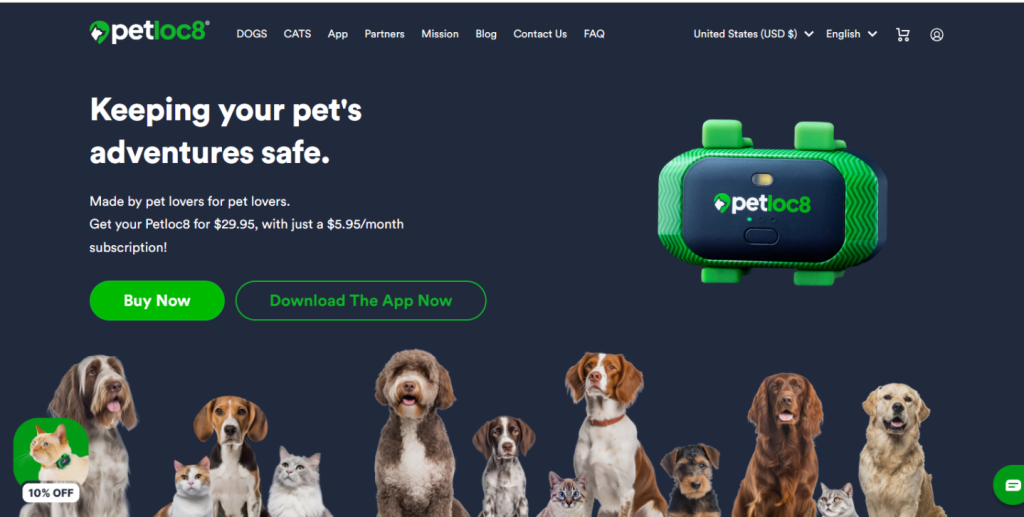
- The Business: Petloc8 is a brand that developed a GPS tracking device specifically for pets. They didn’t invent GPS, but they applied it to a passionate niche: concerned pet owners. Their product offers real-time location tracking, geofencing (creating virtual safe zones), and a community feature to help find lost pets.
- The Niche Strategy: Instead of being a generic GPS company, they focused entirely on the needs and language of pet lovers. Their marketing speaks directly to the fear of losing a furry family member and the peace of mind their product provides
Lessons for New Entrepreneurs:
- Solve an Emotional Problem: Pet safety is a powerful emotional driver. Finding a pain point that resonates deeply with an audience creates strong demand.
- Build a Community: Petloc8’s app includes a feature to connect with other local pet owners to help in a search.This builds a network effect and makes the product more valuable than just its hardware.
- Recurring Revenue is Key: The business model requires a low-cost monthly subscription for the data plan, ensuring continuous revenue beyond the initial device sale.
Myloc8: Simplifying Smart Safety Gadgets
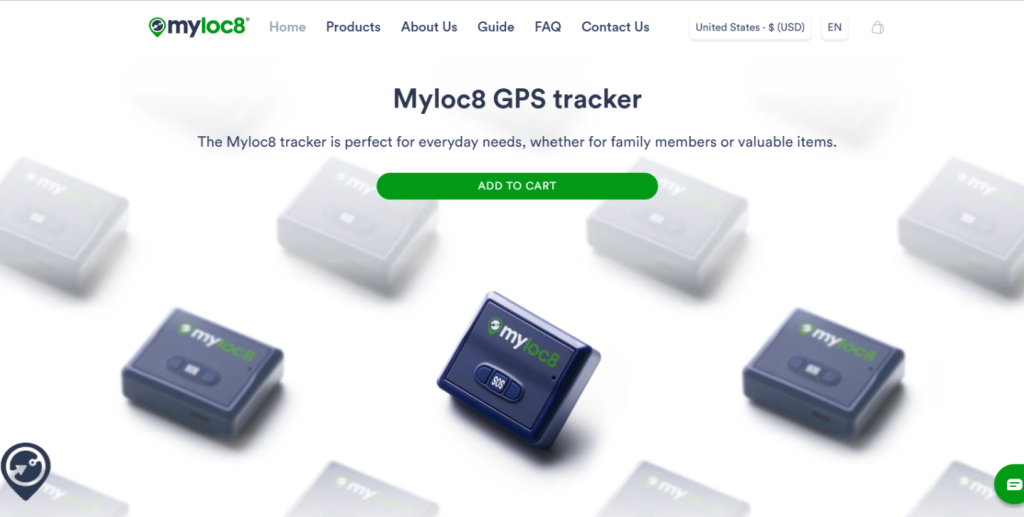
- The Business: Myloc8 offers a range of GPS tracking devices, but they simplify the marketing by focusing on specific use cases: family and kids’ safety, vehicle tracking, and protecting valuable assets.Their products, like the “Halo” and “Edge,” are designed to be small, user-friendly, and have long battery life.
- The Niche Strategy: Myloc8 understands that customers are not buying a “4G LTE GNSS receiver”; they are buying “peace of mind.” They market their trackers for specific needs, such as keeping an eye on elderly family members or tracking professional equipment.This makes the technology approachable and its benefits clear.
Lessons for New Entrepreneurs:
- Focus on the Benefit, Not the Feature: Don’t sell the technical specs; sell the outcome. “Know where your child is” is a more powerful message than “Real-time GNSS positioning.”
- Product Tiering: Myloc8 offers different trackers for different needs—a small one for personal use, a rugged one for vehicles. This allows them to capture different segments of the market.
- Clarity is Kindness: From their simple interface to their clear subscription plans, they make it easy for customers to understand what they’re buying and how to use it.
Conclusion
The path to launching a successful ecommerce business in 2025 is clearer and more accessible than ever before. The digital shelf has infinite space, waiting for your unique idea. From the tangible appeal of a niche product line to the scalable brilliance of a digital download, the opportunities are vast and varied. The 27 ecommerce business ideas explored in this guide are not just abstract concepts; they are viable blueprints for building a profitable venture with minimal upfront investment.
The key is to move from ideation to action. The most successful entrepreneurs aren’t the ones with the most revolutionary ideas, but those who pick a direction, start small, listen to their customers, and relentlessly iterate. Your first product doesn’t have to be perfect. Your website doesn’t need to win design awards on day one. Progress is more important than perfection.
So, choose the idea that ignites your passion and aligns with your skills. Use the tools and strategies outlined here to build your foundation.
